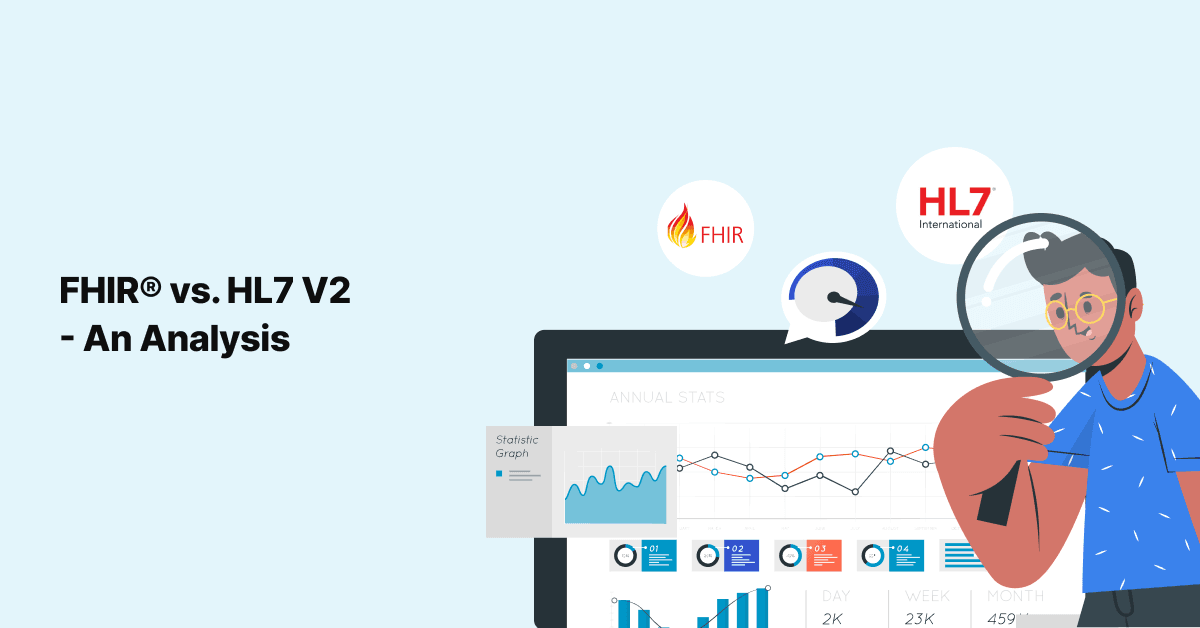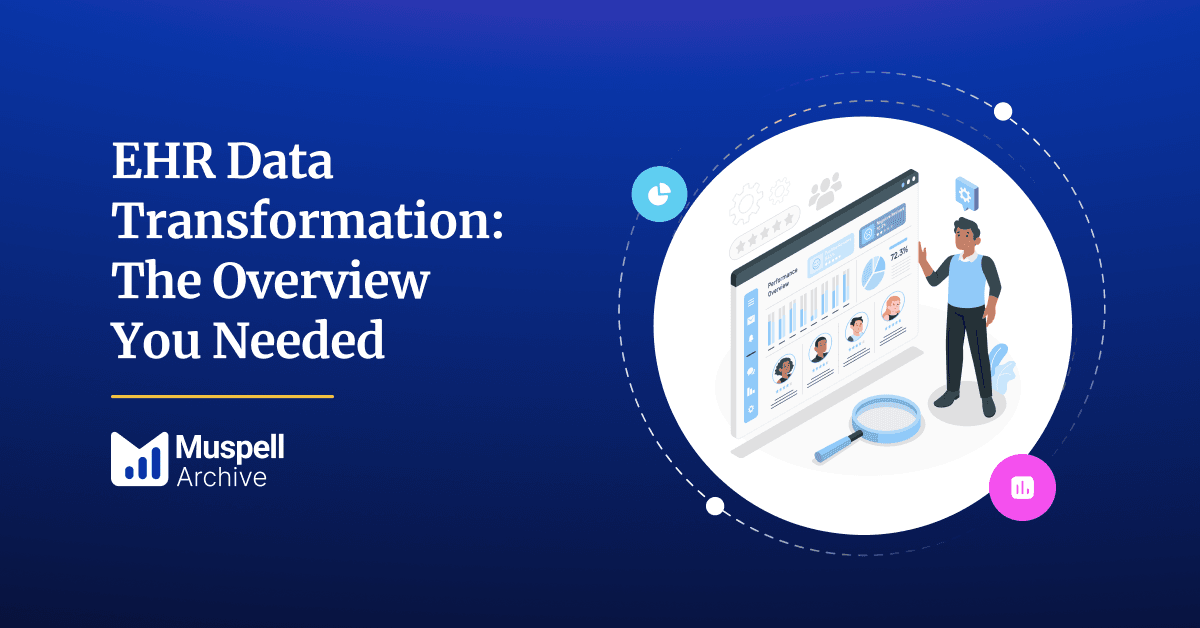
Managing Legacy Data During Mergers and Acquisitions
Merger and Acquisition or M&A activities for hospitals and healthcare systems have significantly increased …

In the modern healthcare industry, data plays a very important role in terms of improving patient outcomes. Making use of Electronic Health Records (EHRs) to their full potential is essential, as they help improve provider and patient communication, as well as healthcare convenience. The seamless exchange of healthcare data among the systems and applications is vital in order to realize the full benefits of EHR information. Proprietary systems had kept data trapped for ages. Providers, patients, and payers often fall back on time-consuming and old methods like manually sharing paper documents, faxing chart notes, and so on for sharing information. However, 30 years ago, the seeds of change were planted. The health industry saw the emergence of Health Level Seven International (HL7), a standard that transformed the way the exchange of healthcare information is facilitated. Over the years, HL7 has produced several other standards, which include the likes of HL7 version 2 and Fast Healthcare Interoperability Resources (FHIR®). This article will take a closer look at the standards and protocols of HL7 v2 and FHIR® and the key differences between them.
Through this blog, you’ll be able to explore the following:
HL7 version 2, also known as HL7 v2 (or just v2), is a standard under HL7 and was released originally in 1989. It has become one of the most globally implemented healthcare standards. HL7 v2 provides a language used to exchange patient administrative and health data among systems, such as Hospital Information Systems (HIS), Electronic Medical Record (EMR) systems, billing systems, Laboratory Information Systems (LIS), and so on. Acting as a Health Information Exchange standard, HL7 v2 has helped health organizations avoid customized software development.
HL7 v2 is designed in a way that makes it highly customizable and flexible, leaving a decent amount of work for the developers and requiring the usage of an interface engine because some custom coding is still required in order to achieve full interoperability.
FHIR® is an important alternative to the HL7 v2 standard. First drafted in 2011 and introduced in the year 2014, it has been created on the backbone of the previous standards - HL7 v2, CDA (Clinical Document Architecture), and primarily HL7 v3. Today, FHIR® is an open standard that has made the exchange of data for new legacy systems and apps easier than before.
FHIR® was developed with the intent of not just improving interoperability and enhancing the efficiency of communication, but also to:
1. Modern standard: FHIR® is a modern healthcare standard. The specifications are freely available on the web and can be easily navigated via hyperlinks. FHIR® uses technology widely used by modern developers, even in non-healthcare domains. These technologies are familiar to most developers and hence reduce the learning curve in comparison to the older healthcare-specific standards such as v2:
FHIR® exchanges data using the client-server model. However, it also provides tooling to achieve an event-based messaging paradigm that is similar to the HL7 v2 messaging structure.
The data model and the exchange mechanisms in FHIR® are based on the REST architecture.
Data is exchanged using modern data exchange formats that are used widely across the web, such as XML, JSON, RDF, and using HTTP APIs.
2. Reduction in implementation variation: FHIR® strives to solve the challenge of variation in implementation posed by the flexibility of HL7 v2 by providing a specific purpose to the elements defined in the standard and controlling the use of healthcare terminology and any extensions to it.
3. Better approach to reusability: FHIR® takes a different approach to reusability from HL7 v2. FHIR® allows referenced and referencing objects to be manipulated independently. HL7 v2 segments, on the other hand, cannot be independently manipulated. This makes referencing in FHIR® truly useful and applicable.
4. Streamlined and fast implementation: FHIR® makes data interoperability fast to implement in the healthcare domain because the data model is streamlined for healthcare needs. HL7 v2 data types and segments are frequently cluttered with data elements that are not used or even understood by most implementations. Instead, FHIR® uses the 80-20 rule and, in its most standard implementation, includes only those 20% or so elements that cover 80% or so of the healthcare needs. In order to allow for other use cases, FHIR® has a very controlled and interoperable mechanism for extending the data model to include non-standard elements.
5. Better tooling for profiles: Just like HL7 v2, FHIR® provides a formal mechanism for defining profiles to guide a specific use case of the specifications. However, FHIR® profiles form an essential component of the methodology. They are built into tooling, which increases the likelihood of their use.
6. Human readability: In addition to the machine-readable data structure, FHIR® requires a human-readable narrative that contains all information relevant to human decision-making to be provided for each resource that is exchanged. V2 instances, on the other hand, do not provide human-readable versions of the content exchanged.
When implementing FHIR®, your health organization must be aware that there would be some important decisions regarding implementation that have to be made and, along with that, the presence of some potential challenges. For instance, undertaking an in-house implementation of FHIR® would require learning new skills. Some of the implementation challenges of FHIR® are:
HL7 has been a widely accepted healthcare standard for decades, and its new versions have been equally accepted amongst the target consumers. FHIR®, even though it has been built on the previous standards, has its own unique identity and is very young and dynamic. The implementation of FHIR® creates an advanced pathway for better interoperability and integration by opening new opportunities in cloud communications and mobile health applications. FHIR® had, in fact, emerged as the basic building block when it comes to patient care due to its ability to provide EHRs with the right kind of interoperability methods. However, once the health organizations find the right way to overcome the implementation challenges, FHIR® could be the most appropriate standard to follow, as it combines the best features of the various HL7 versions.
Join over 3,200 subscribers and keep up-to-date with the latest innovations & best practices in Healthcare IT.

Merger and Acquisition or M&A activities for hospitals and healthcare systems have significantly increased …

Information blocking was brought into action to ensure the patient’s right to access their health data was …

As the healthcare IT landscape evolves, the importance of EHR applications grows significantly. Therefore, …